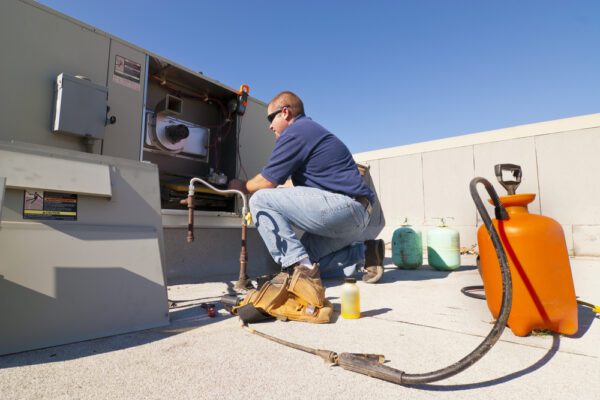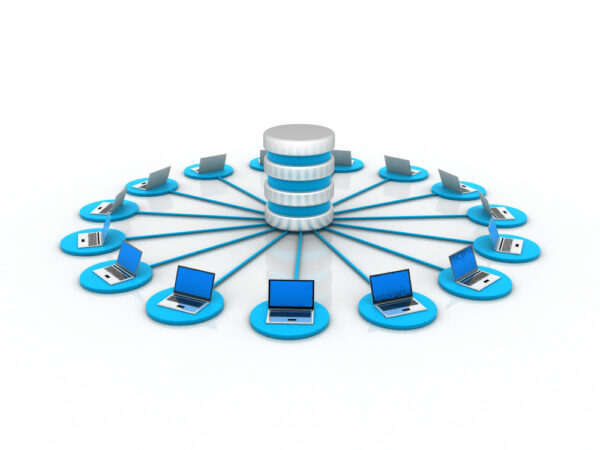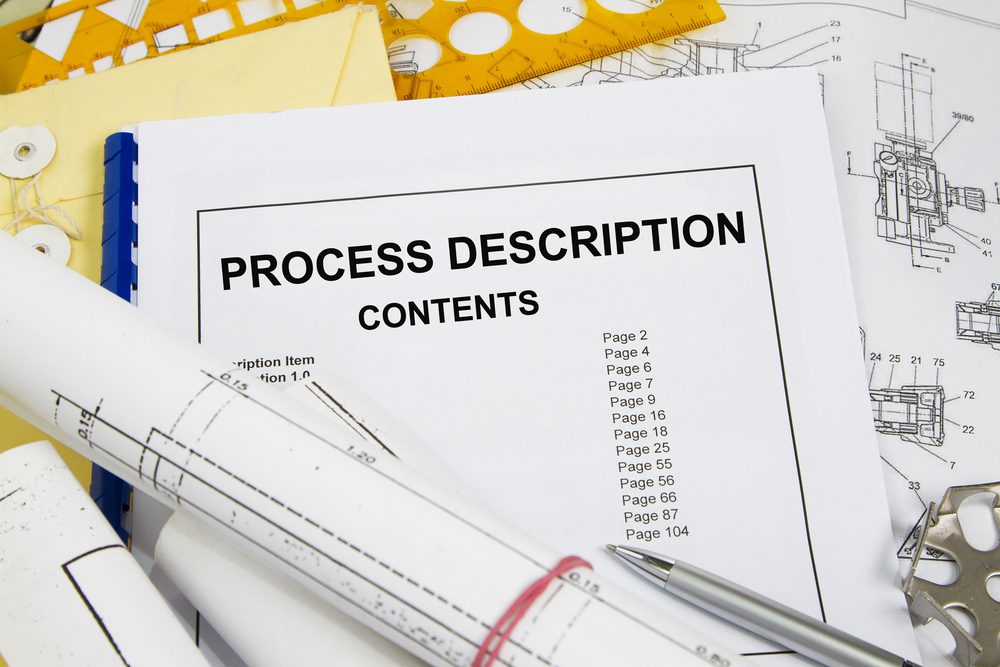
Public sector organizations, such as local municipalities and federal agencies, manage a wide variety of facilities that must remain safe, functional, and compliant with regulations. Yet maintaining these buildings, assets, and infrastructure comes with unique challenges. This article explores the most common government facility maintenance challenges and explains how a computerized maintenance management system (CMMS) helps public sector teams streamline operations, control costs, and maintain accountability.
What is Government Facility Management?
As defined in the International Organization for Standardization’s (ISO) 41011 documentation, facility management is an organizational function which integrates people, place, and process within the built environment with the purpose of improving the quality of life of people and the productivity of the core business. Applied to government organizations and the public sector, government facility management ensures that government-owned buildings and infrastructure are safe, sustainable, operational, and support the core mission of government operations.
As described in our article, What is Facility Management?, facility management is commonly divided into soft services and hard services. Soft facility management services typical relate to the facility’s occupants and usage. Hard facility management services, which include building maintenance services, deal with the facility’s physical infrastructure and systems. The article focuses primarily on hard government facility services.
Examples of Government Facilities and Infrastructure
There is a wide range of government facilities, each with their own purpose and function. Common types of government facilities and infrastructure include:
- City halls and administrative buildings
- Police and fire stations
- Public schools and libraries
- Utilities and other public works
- Courthouses and correctional institutions
- Military bases, defense training facilities, and veteran hospitals
- Utilities such as water treatment plants, electrical substations, and sewage systems
- Transportation infrastructure such as roads, bridges, tunnels, and public transit systems
- Communication networks including radio towers, cellular infrastructure, telephone lines, and fiber optic cables
The Role of Maintenance in Government Facility Management
While government facilities share many of the same building maintenance management needs as the private sector, the diversity of government facilities presents unique challenges. Each building or location serves a distinct purpose and requires a unique maintenance strategy to support its function.
Regardless of facility type, maintenance teams play a critical role in ensuring that public buildings and infrastructure remain operational, safe, and compliant. This includes supporting essential government functions, ensuring mission readiness, protecting public safety, and managing risk – all while navigating strict budgets and adhering to regulations. In this context, maintaining government assets isn’t just about repairs – it’s about keeping public and intra-government services running.
Proper maintenance also contributes to long-term cost savings by extending asset life and avoiding major failures. Because these facilities are funded by taxpayers and used by the public, their condition and operation are subject to increased scrutiny, making effective maintenance and facility management essential for demonstrating accountability and preserving the public’s trust.
Common Government Maintenance Challenges
Government facilities have similar maintenance challenges as other facilities, though government organizations must overcome additional hurdles that the private sector doesn’t typically face. Not only do these challenges make maintaining government facilities and infrastructure more complex, they often require more time and resources to address. The following sections outline some of the most common challenges that government agencies face in facility maintenance.
Aging Infrastructure and Obsolescence

Many government buildings are decades old and showing their age. A 2015 report by the United States Government Accountability Office (GAO) found that the average age of consistently poor-performing government buildings is 70 years. Due to their age, these buildings often require more frequent and costly repairs.
While replacing or upgrading infrastructure might seem like a logical solution, poor physical condition, a large backlog of deferred maintenance, and potential historical status complicate modernization efforts. In addition, deterioration and outdated work environments make it difficult to attract tenants or repurpose unused space – opportunities that could help generate funding for maintenance activities.
Maintaining older buildings may also require spare parts that are obsolete or difficult to source, or specialized expertise that often comes at a premium. Furthermore, legacy building systems may no longer meet modern safety or compliance standards, requiring additional resources to bring them up to code. These factors can quickly exhaust already-tight maintenance budgets.
Budgeting and Financial Constraints
Maintenance budgets are primarily funded through tax revenue and are typically included as part of broader facilities or public works budgets. As a result, maintenance is often performed based on available funding rather than actual facility maintenance needs. Due to competing priorities, maintenance tends to be underfunded, deferred, or approved in very limited circumstances.
Compounding the issue, maintenance budgets are frequently based on prior-year spending rather than current facility conditions. In many cases, top management doesn’t know the full scope of facility maintenance needs and has trouble forecasting costs accurately. This causes budget overruns which leads to conflict within operations teams.
Unlike private organizations, which can allocate funds across multiple years, government agencies must follow annual budget cycles, forcing them to take a year-by-year approach to facility and infrastructure maintenance. In many cases, federal budgets must also be used within the same fiscal year, further complicating long-term maintenance planning. While agencies can request additional funding for capital or operational improvements, the process is typically more complex and subject to additional layers of oversight and approval.
Contractor and Procurement Issues
A significant amount of government facility maintenance is handled by contracted service providers. Due to procurement regulations, agencies are typically required to conduct a competitive bidding process and often award contracts to the lowest bidder. While cost control is important, this approach can result in contracts being awarded to providers who are underqualified, rely on less skilled labor, or use lower-quality materials. In some cases, this leads to substandard work that not only fails to solve problems but may actually worsen facility conditions and increase long-term maintenance costs.
For in-house teams, the procurement process presents different challenges. Commonly used parts and consumables are often stocked, but non-standard or specialized parts must be ordered through a formal procurement process that frequently involves multiple layers of approval and justification. These delays add unnecessary downtime, increase operational costs, and strain already limited maintenance teams.
Misguided Maintenance Efforts

As mentioned in our article 5 Reasons Maintenance Management is Important, maintenance teams often perform work that is unnecessary, unproductive, or even counter-productive. For example, many teams employ a time-based maintenance strategy where tasks are performed on a fixed interval without taking into account the facility’s condition or need. This strict approach can lead to over- or under-maintenance, which wastes time and money, and introduces additional risk.
Limited resources also force in-house maintenance teams to adopt a reactive maintenance approach. Many teams do not have enough resources to conduct daily or weekly inspections, causing early signs of wear and tear to go unnoticed. This lack of visibility pushes teams into a habit of reacting to breakdowns, pulling them away from planned maintenance activities and increasing the risk of costly downtime and unplanned repairs.
Ineffective Maintenance Operations Management
Another challenge facing government maintenance teams is the lack of technical knowledge among management. As more maintenance work is outsourced, the role of maintenance supervisor often shifts away from hands-on or strategic maintenance planning toward contract oversight. A 2016 case study from the University of Malaya highlighted this issue, noting that in one facility, a supervisor was reassigned from office work to overseeing maintenance simply to fill a vacancy. In such cases, supervisors may approve maintenance reports without the expertise to properly evaluate work quality or verify task completion.
Lack of Modern Maintenance Tracking Tools
Many maintenance teams continue to rely on paper-based or manual maintenance tracking systems, making it difficult to manage key administrative tasks such as tracking assets across locations, managing work orders, and scheduling preventive maintenance.
Manual maintenance tracking methods are cumbersome and inefficient, wasting valuable time and resources that could be spent on physical maintenance work. Additionally, they make it difficult to access meaningful maintenance data that could support strategic maintenance planning and asset lifecycle management.
Further Reading: Pros and Cons of Different Work Order Management Systems
Compliance and Policy Pressure

Whether performed by in-house teams or contractors, maintenance work on government facilities must comply with a wide range of regulations, including safety standards, accessibility requirements, and local building and fire codes. Some facilities may also fall under historic preservation guidelines, which restrict the materials or techniques that can be used. Additionally, there may be social or policy pressure to adopt environmentally-friendly “green” initiatives.
Beyond performing work to standard, agencies must maintain detailed documentation that work was performed to standard. These records are often subject to audits, inspections, or funding reviews. Together, these requirements add time, cost, and complexity to government maintenance operations.
Recommended Reading: Getting Familiar with Maintenance Standards and Their Impact on Operations
Compliance issues can also impact the tools government maintenance teams use. For example, agencies using computerized maintenance management system (CMMS) software or facility maintenance software must comply with federal data security standards or, in defense-related organizations, enforce strict user control.
How CMMS Software Helps Overcome Government Facility Maintenance Challenges
Government agencies face a unique set of maintenance challenges that threaten their ability to provide uninterrupted public services. A computerized maintenance management system (CMMS) provides a centralized digital platform that helps government agencies manage all aspects of facility maintenance. By gaining more insight into maintenance operations, a public sector CMMS empowers government agencies to make data-driven decisions, resulting in more effective and strategic maintenance. The following sections outline how CMMS software supports government facilities.
Learn how FTMaintenance supports the public sector.
Increased Visibility of Assets

Government agencies are responsible for the upkeep of a wide range of equipment and facilities spread across locations. A CMMS allows you to track all assets in a single system, providing quick access to information about an asset’s location, condition, and performance levels. Using this information helps you monitor asset health, avoid unnecessary maintenance, and prioritize repairs.
Centralized View of All Work Requests and Work Orders
A CMMS brings all work requests and work orders together in a single system, allowing you to track maintenance work from start to finish. Building occupants can use an online work request portal to submit requests directly to the maintenance team. Maintenance supervisors can then review, prioritize, assign, and track requests, improving response times and reducing missed or duplicated work.
Proactive Planning of Preventive Maintenance Activities
CMMS software enables you to take a proactive approach to government facility maintenance by helping you effectively schedule, track, and manage preventive maintenance activities. Using calendar-based, usage-based, or condition-based triggers, you can ensure that maintenance is only performed when needed. Not only does this reduce unnecessary work, it frees up your team to focus on other high-priority tasks.
Better Decision-Making using Powerful Maintenance Data

Government agencies can use a CMMS to leverage their maintenance data to make smarter, more informed maintenance management decisions. KPI dashboards and reports support continuous process improvement by helping you visualize trends, monitor performance, and identify bottlenecks in your maintenance process. With real-time data reporting and up-to-date information, you can allocate resources more effectively and quickly adjust your maintenance strategy as facility maintenance needs change.
Improved Compliance Tracking
A major benefit of CMMS for government agencies is that the system acts as a centralized documentation system for compliance with regulatory standards. The system automatically records maintenance activities, recording who performed the work and when, and stores supporting documentation that proves compliance.
Maintenance teams can also upload compliance documentation and create task lists that ensure technicians follow approved processes that meet regulatory requirements. When it comes time for audits or inspections, built-in audit trails and reporting tools make it easy to retrieve maintenance records to demonstrate compliance with regulations.
Flexible Deployment Options
Government agencies must comply with strict IT policies and data security regulations such as Federal Information Security Management Act (FISMA), the Federal Risk and Authorization Management Program (FedRAMP), and the International Traffic in Arms Regulation (ITAR). While many agencies can take advantage of cloud-based CMMS solutions that meet these standards, other may require – or –prefer – on-premise deployment to maintain full control over system access, data storage, and network security.
FTMaintenance Select is one of the few CMMS solutions on the market that offers an on-premise deployment option – including full support with a mobile app. This flexibility gives government agencies the freedom to meet internal requirements without sacrificing functionality.
Protect Public Buildings and Government Infrastructure with FTMaintenance Select
Government agencies face a wide range of challenges when it comes to managing public facilities. Aging infrastructure, budget constraints, and government oversight make already-difficult facility maintenance even more complex.
FTMaintenance Select equips government agencies with the tools needed to stay organized, compliant, and make the most of limited resources while providing uninterrupted public service. Both cloud-based and on-premise deployment is available to meet the unique data security and compliance requirements of government agencies. Request a demo today to learn more.











Recent Comments